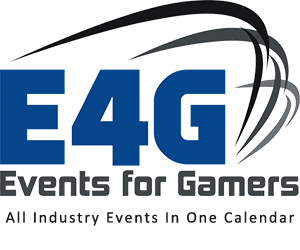 NVIDIA began it’s life as a chipset and video card company in 1993, and over the years has evolved into an enterprising force that’s now billed itself as a “visual computing company”. The processing horsepower of the GPU (graphics processing unit) is a data-crunching beast in everything from the visuals in movies to solving problems across the spectrum of the sciences.
NVIDIA began it’s life as a chipset and video card company in 1993, and over the years has evolved into an enterprising force that’s now billed itself as a “visual computing company”. The processing horsepower of the GPU (graphics processing unit) is a data-crunching beast in everything from the visuals in movies to solving problems across the spectrum of the sciences.
Despite that, NVIDIA built its foundation early on showcasing the bleeding edge of gaming graphics, and the expo hall at the GPU Technology Conference reflected that legacy in some measure.
 NVIDIA themselves hosted a popular expo centerpiece of a racing game with a three-screen display, full standing automotive-style controls, on a powerhouse of a PC revving its engines with four pricey but powerful GeForce GTX Titan Black GPU cards.The GeForce GTX GPU class was on a pod on the floor, featuring Titanfall as the PC as the demo game of choice. G-Sync, NVIDIA’s display technology for synchronizing display refresh rates, was also shown off through the lens of a first-person shooting PC game. The NVIDIA SHIELD clamshell mobile Android (read gaming device) also was frequently showcased by NVIDIA themselves, even as a device to control the frequently in-flight Parrot AR Drone 2.0 via an app.
NVIDIA themselves hosted a popular expo centerpiece of a racing game with a three-screen display, full standing automotive-style controls, on a powerhouse of a PC revving its engines with four pricey but powerful GeForce GTX Titan Black GPU cards.The GeForce GTX GPU class was on a pod on the floor, featuring Titanfall as the PC as the demo game of choice. G-Sync, NVIDIA’s display technology for synchronizing display refresh rates, was also shown off through the lens of a first-person shooting PC game. The NVIDIA SHIELD clamshell mobile Android (read gaming device) also was frequently showcased by NVIDIA themselves, even as a device to control the frequently in-flight Parrot AR Drone 2.0 via an app.
Let’s take a look at some of the game industry-oriented companies who are part of the NVIDIA ecosystem and what they were showing on the expo floor:
![]() Silicon Image:
Silicon Image:
I met with Michael Bergen with Silicon Image, who showed off demonstration of their 60GHz WirelessHD chipset. In a nutshell, WirelessHD is a standard to provide a wireless and high-definition A/V connection for applications designed to be streamed to a display at a wired-level quality of display.
In this case the prototype demonstrated the potential of their technology in transmitting data between, between a SHIELD mobile Android device and a high-definition TV display. Currently, according to Bergen, they’re shopping the technology around for a company interested in building a market-ready product that will bring this technology between smartphones, tablets and other wireless-capable devices and HD-capable displays.
I personally tried the Riptide GP demo using the SHIELD, and didn’t notice any appreciate latency to my eye and reflexes. To whatever extent I succeeded (or not) in playing this game, it was due only to my skill, not the hardware — and not the wireless, and that‘s saying something. There are several other wireless standards vying for the even-high-speed wireless crown, but this demo was a pretty solid proof-of-concept what can be done to bring high-def mobile gaming to larger screens without wires.
NVIDIA has been partnered with WirelessHD since 2011, to ensure the technology standard integrates well with NVIDIA hardware.
 Exvision:
Exvision:
Exvision is a start-up spun out from the University of Tokyo. Among the many projects in their portfolio is a gesture recognition chipset and software system optimized for the NVIDIA GPU. Their gesture system is “designed to run on a single high speed CMOS Sensor”. Zak Morimoto, a board member for Exvision, walked me through a demo of how precise the technology could be when applied to a game. Think a variation of Microsoft’s Kinect on a mobile device, but as integrated hardware and software rather than as standalone hardware.
Halfbrick Studio’s Fruit Ninja is a familiar touch-based game to millions of mobile gamers, but in this instance, a company representative sat several feet away in a chair and emulated the multi-touch gestures evidenced in the game, frantically waving his arms in a calculated flurry of motion to “slice” the fruit seen only to him on his mobile screen, but represented on a large screen. Other games Morimoto believes would be ideal are Cut the Rope and Candy Crush, and in fact, have tested about ten popular games with their system. Morimoto believes partnering with gaming platforms at the software level is a better way to introduce their version of gesture-driven gaming to software developers.
Once again, low latency in any games-related networking or remote peripheral is a necessary feature and Morimoto claims a latency of less than 30 ms for this system. The gesture system is past beta stage of development, nearly ready for market, and is currently being readied for Android and Windows platforms. In addition to reaching out to software platforms, the company is in search of hardware OEM partnerships to integrate their hardware.
 Lenovo:
Lenovo:
Lenovo usually doesn’t show its hand directly when it comes to gaming potential, but one of their televisions did show some of exactly that — but for China, at least for now. The Terminator S9 is a 50” smart TV with a super-duper high-resolution 4K display and a custom-skinned version of the Android 4.2 OS. The real brains behind the operations lies in a Smart Card, loaded with the Tegra K1 mobile super-chip, which claimed a lot of the thunder at the show overall.
Top-shelf games, of course, should run brilliantly on this all-in-one hardware, especially with the Tegra K1 enabled, provided it has a continued upgrade path for at least additional memory and storage.
 Oculus Rift VR:
Oculus Rift VR:
Oculus Rift VR once again drew the steady, sometimes long, lines to try out its developer-ready headset, evangelizing a convincing impression of pixilated immersive reality in stereoscopic vision. That much has been the way of things for the virtual reality hardware start-up’s roadshow from GDC 2013 onward, that I have seen.
What was different this time for the company, aside from the recent announcement of the estimated shipping date of the updated DK2 dev-kit, was the acquisition by Facebook for $2 billion amidst the GTC 2014. What attracted even more attention to this particular coincidence was the seemingly less-coincidental delay in Oculus’ Chief Software Architect Michael Antonov’s appearance to speak.



